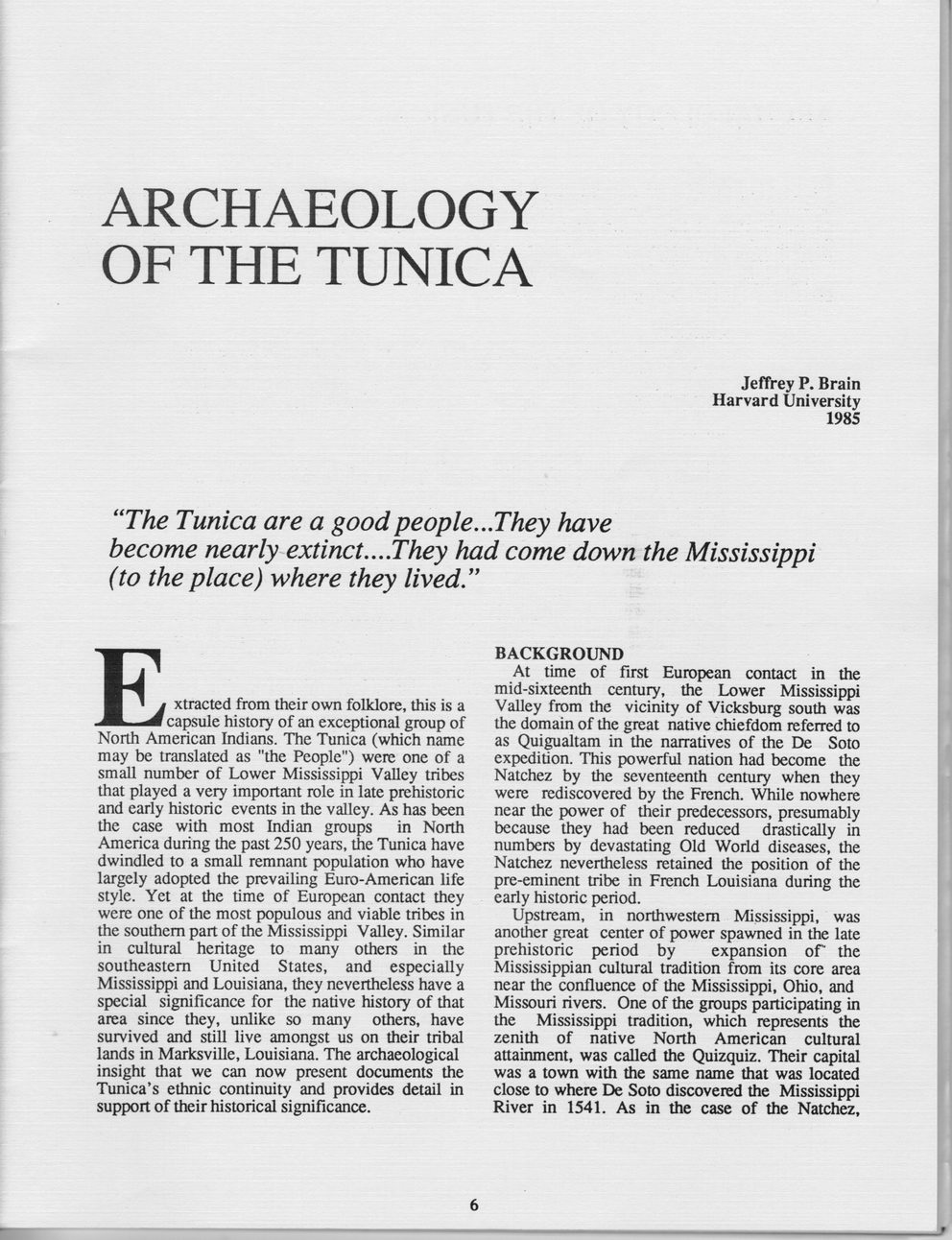This text was obtained via automated optical character recognition.
It has not been edited and may therefore contain several errors.
ARCHAEOLOGY OF THE TUNICA Jeffrey P. Brain Harvard University 1985 “The Tunica are a good people. ..They have become nearly extinct....They had come down the Mississippi (to the place) where they lived.” r I ' j xtracted from their own folklore, this is a capsule history of an exceptional group of North American Indians. The Tunica (which name may be translated as "the People") were one of a small number of Lower Mississippi Valley tribes that played a very important role in late prehistoric and early historic events in the valley. As has been the case with most Indian groups in North America during the past 250 years, the Tunica have dwindled to a small remnant population who have largely adopted the prevailing Euro-American life style. Yet at the time of European contact they were one of the most populous and viable tribes in the southern part of the Mississippi Valley. Similar in cultural heritage to many others in the southeastern United States, and especially Mississippi and Louisiana, they nevertheless have a special significance for the native history of that area since they, unlike so many others, have survived and still live amongst us on their tribal lands in Marksville, Louisiana. The archaeological insight that we can now present documents the Tunica’s ethnic continuity and provides detail in support of their historical significance. BACKGROUND At time of first European contact in the mid-sixteenth century, the Lower Mississippi Valley from the vicinity of Vicksburg south was the domain of the great native chiefdom referred to as Quigualtam in the narratives of the De Soto expedition. This powerful nation had become the Natchez by the seventeenth century when they were rediscovered by the French. While nowhere near the power of their predecessors, presumably because they had been reduced drastically in numbers by devastating Old World diseases, the Natchez nevertheless retained the position of the pre-eminent tribe in French Louisiana during the early historic period. Upstream, in northwestern Mississippi, was another great center of power spawned in the late prehistoric period by expansion of the Mississippian cultural tradition from its core area near the confluence of the Mississippi, Ohio, and Missouri rivers. One of the groups participating in the Mississippi tradition, which represents the zenith of native North American cultural attainment, was called the Quizquiz. Their capital was a town with the same name that was located close to where De Soto discovered the Mississippi River in 1541. As in the case of the Natchez, 6

Native Americans The-Tunica-Biloxi-Tribe-its-Culture-and-People-(13)